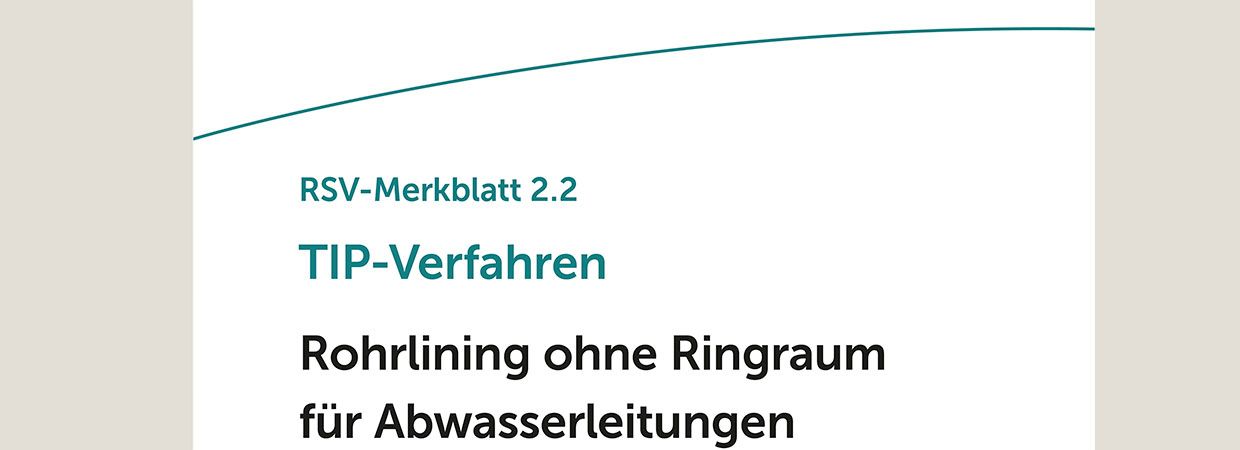english – RSV factsheet 2.2: Latest changes
The working group on the TIP procedure has decided to change the title of the factsheet in the new edition (September 2023) following suggestions from the client side.
"This is due to the fact that network operators missed a reference to the normative categorisation," explains working group chairman Nico Schlenther. In future, the classification "Pipe lining without annulus for drains" will appear in the title alongside the term "TIP procedure" in accordance with DIN-EN 15885 under sewer rehabilitation. As the TIP procedure is available both in the variant lining with continuous pipes and in the variant lining with discrete pipes, "pipe lining" was chosen as the generic term.
The proposal to remove the term TIP procedure from the title and from the factsheet was not accepted. On the one hand, because tight-in-pipe is a clear characteristic and, on the other, because the process designation has long been established. The first edition of the factsheet dates back to 2012. Schlenther: "The working group has once again clearly countered assumptions that the TIP procedure is a trademark-protected designation. This is definitely not the case."
The working group includes installation companies, various pipe manufacturers, engineering firms and network operators.
More detailed explanation of the classification
Regardless of the title, the factsheet still states that the TIP procedure in pipe condition IIIa can also have the character of a renewal procedure. This is discussed both in the preface and in the "Classification" chapter.
This is already stated in the previous version:
The TIP procedure is classified in the "renovation" technology family when using pipe condition IIIa in accordance with DWA-A 143-2. When using pipe conditions I to III, the TIP procedure is assigned to the "sewer rehabilitation" technology family. Irrespective of the classification as a sewer rehabilitation or renewal process, the depreciation periods can be considered in the same way as for new pipes due to the use of factory-manufactured pipes (see chapter 1.5).
The following has now been added:
The local conditions under budgetary law must be taken into account, based on the overall system consisting of pipes, manholes and connecting pipes.
According to DIN EN 752, "measures to improve the function of an existing piping system with complete or partial inclusion of the original pipe substance" is a sewer rehabilitation. In the TIP procedure, the substance of the existing pipe system is not included in pipe condition IIIa. When dimensioning on the assumption of pipe condition IIIa, the new pipe is statically verified for the full effect of earth and traffic loads - without taking into account the residual load-bearing effect of the existing pipe.
(Changed September 2023)
The differentiated view of the commercial and technical perspective on the definitions of sewer rehabilitation and renewal is already discussed in the preface. It now states:
Pipes with pipe conditions I to III can be renovated using the TIP procedure. Pipes for which pipe condition IIIa is applied (described in DWA A 143-2 and statically calculated in accordance with ATV-DVWK A-127) can also be renewed using the TIP procedure. According to the definition (DIN EN ISO 752), the definitions of sewer rehabilitation and renewal are based on the inclusion of the old pipe substance. the objective of the structural design. For more detailed explanations, see point 1.1
Note for users: The issue of categorising procedures in the renewal and sewer rehabilitation classification defined in DIN EN 15885 is repeatedly discussed in various committees. It is noticeable that there are different ways of looking at this - for example from the point of view of commercial or technical or legal responsibility. This factsheet does not claim to provide comprehensive legal and commercial recommodation. The above technical consideration of the TIP procedure was made taking into account the applicable rules and regulations.
(Changes September 2023 marked in bold)
